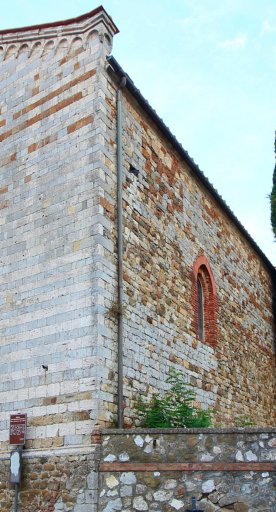Ex-Church of Sant’Antonio in Campagnatico
The medieval church is one a historic place of worship in the Maremma village
The ex-Church of Sant’Antonio, in the municipality of Campagnatico, dates to the 12th century. Around 1860-70, the Accademia dei Perseveranti in Campagnatico began to build a theatre using the deconsecrated church. The work went on for several years, and the theatre was finally inaugurated in 1883.
During World War I, when the theatre’s performances were suspended, the building was used to store grain, which led to the deterioration of the structure. In 1948, restoration works were carried out by Silvio Rossi, a descendent of the family that had supported the original theatre’s construction. In 1956-57, the theatre was demolished and the building, after passing into the hands of the city administration, was used as a party hall and meeting space for the community. The building conserves the Romanesque, stone façade, vaunting three rounded arches and a central portal. The façade has undergone a few changes, however, including the opening of two portals on either side of the main entryway and the window to replace the original rose window.
The interior has three aisles and a wooden ceiling, as well as a barrel-vaulted apse. The ex-church conserves a series of fresco fragments discovered in 1987 that were recently restored; they depict some of the saints, including St. Anthony. The works were painted by an artist from the Sienese school around the late 14th century/early 15th century.


